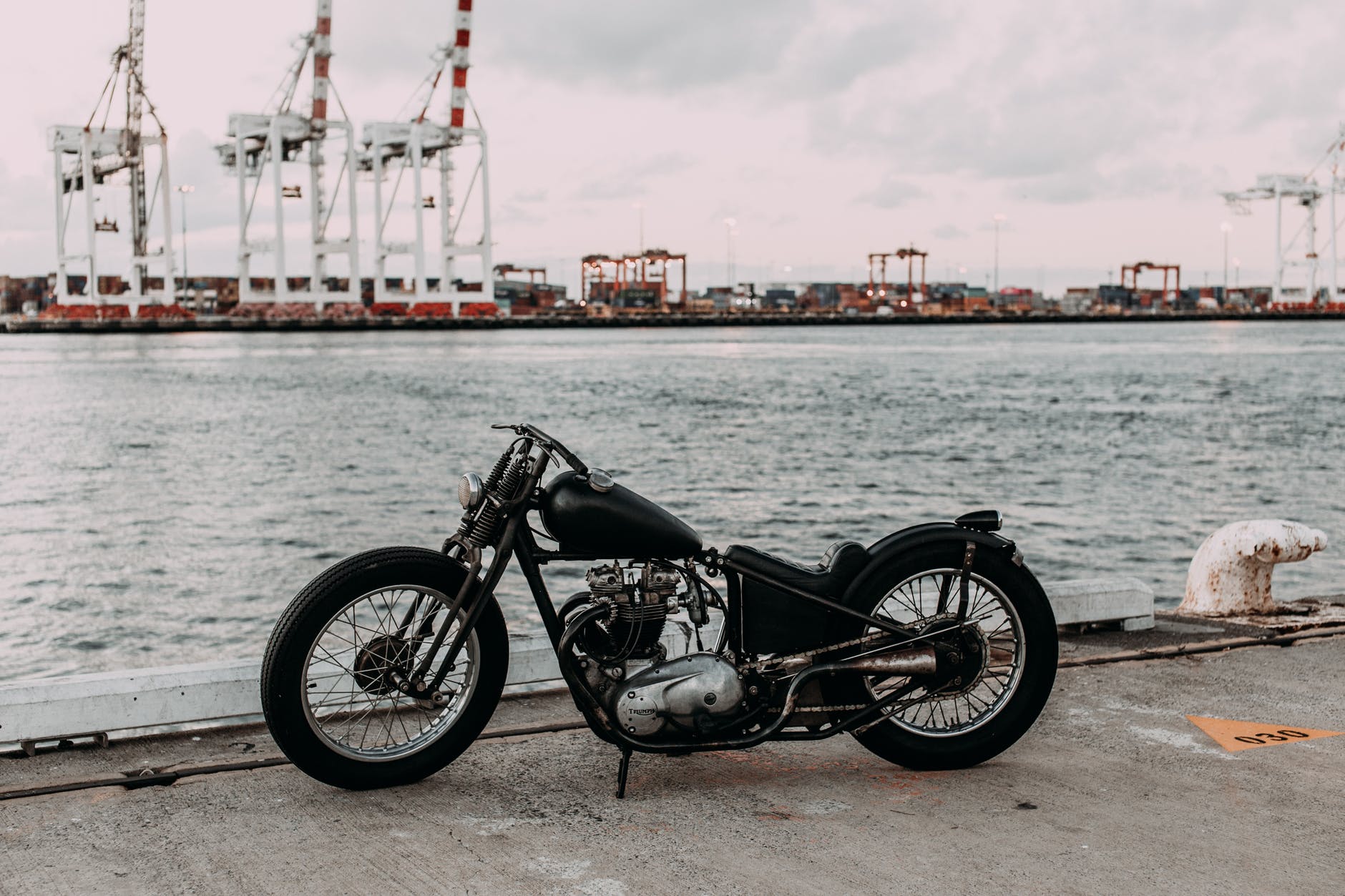
Photo by Rachel Claire on <a href="https://www.pexels.com/photo/parked-retro-motorbike-on-city-embankment-4577442/" rel="nofollow">Pexels.com</a>
Motorcycle accidents present a higher probability of serious injuries because motorcycle riders do not have the same level of protection as an automobile driver. The rider could be thrown from the motorcycle and sustain far more serious injuries or die as a result of the accident. When it comes to these accidents, there are several steps that the rider and others must take to get medical assistance and report the accident properly. Motorcycle riders can also follow precautionary steps to reduce their risk of an accident or decrease the severity of their injuries if they are involved in an ancient. Moving violations are often a cause for these accidents and could place the riders at a greater risk. Reviewing 3 safety measures to prevent motorcycle accidents and 3 things to do it an accident happens gives motorcycle riders guidance in legal proceedings.
Safety Measures to Prevent An Accident
1. Wear a Motorcycle Helmet
While motorcycle helmets are required by law everywhere, they are the best line of defense for motorcycle riders. The helmets protect them against major head trauma if they are involved in a motorcycle accident. Studies show that wearing the helmet prevents the riders from sustaining traumatic brain injuries during a motorcycle accident. However, it is important to understand that the impact of the automobile increases risks to the motorcycle rider since they don’t have adequate protection against a vehicle that is moving at greater speeds.
If the individual wears a helmet that fits properly, and they connect the strap properly, the motorcycle rider gets added protection. If they do not wear the helmet, the impact on their head or neck could produce fatal injuries. Individuals who have been involved in a motorcycle accident start a claim by contacting an attorney.
2. Avoid Blind Spots
Automobile drivers cannot see the motorcycle if the rider travels in the common blind spots. Whenever possible, the motorcycle rider should stay behind the automobile where the driver can see them from the side or rear-view mirrors. If the rider is traveling in blind spots, it is more likely that the automobile driver won’t see the rider behind them when they need to stop suddenly. This can increase the risk of the motorcycle rider colliding with the back end of the automobile.
3. Do Not Lane Split
Lane splitting is a serious moving violation where the rider travels in between the lanes of traffic instead of staying inside the lines on the road. Motorcycle riders commit the moving violation when traffic is congested or moving more slowly. It’s a commonality for motorcycle riders that become frustrated when sitting in traffic, and they enter the midsection of the road to go around the automobiles and get further up the road.
Unfortunately, if they commit lane splitting, the motorcycle rider faces comparative fault rulings if they are injured in an accident, and they are guilty of lane splitting. If they are guilty of lane splitting, the court will reduce the monetary award offered through a personal injury claim. The judge applies a percentage of fault for lane splitting, and they decrease the total according to the percentage. If the motorcycle rider is more than 50% at fault, they will lose their monetary award, and their case will be dismissed.
What to Do If a Motorcycle Accidents
1. Move Off of the Road If Possible
If possible, the motorcycle rider must move out of the roadway. If they are conscious and able to move, the step could prevent them from sustaining additional injuries. If another party shows up on the scene, the other party may help them move their motorcycle out of the road, too. However, if the motorcycle rider is too injured, they should not attempt to move the motorcycle on their own because this could worsen the injuries they sustained in the accident. If they are coherent and didn’t sustain injuries, they should try to get the motorcycle and themselves out of harm’s way, but they should never leave the scene of the accident. Leaving the scene of an accident is a serious crime, and the motorcycle rider will face penalties for the infraction.
2. Contact Law Enforcement
After the motorcycle accident, it is vital to contact law enforcement to report the motorcycle accident to the authorities. When officers arrive at the scene of the motorcycle accident, they investigate the accident to find out what happened and what party is at fault for the accident. The findings are added to the accident report, and all parties involved in the accident are required to submit a copy of the accident report to their insurer.
After law enforcement is on the scene and designates who is at fault, the victims involved in the accident must collect auto insurance details from the at-fault driver. The victims must collect the information and start a claim through the at-fault driver’s insurance provider. If the at-fault driver doesn’t have auto insurance, the victims will have to file a legal claim to collect compensation for their medical costs and motorcycle repair costs.
3. Seek Medical Treatment
Seeking medical treatment enables the victim of the accident to get a complete medical assessment to determine if they have injuries. It is a great idea to get medical treatment even if they have minor injuries because the doctor could find underlying injuries for which the victim isn’t showing symptoms. Once they have been to the emergency room for the injuries, the victims have medical evidence of their injuries if they need to file a legal claim against the at-fault driver.
Motorcycle accidents are often caused by moving violations such as lane splitting. Riders who do not stay away from blind spots could become a victim of an accident because the automobile driver can’t see them. Motorcycle riders must also take precautions to reduce the severity of injuries by wearing a motorcycle helmet and protective gear when riding. Taking extra precautions may lower the risk of an accident or prevent a fatality in these events. Reviewing what to do after an accident shows motorcycle riders what steps to take if they need to file a legal claim.


